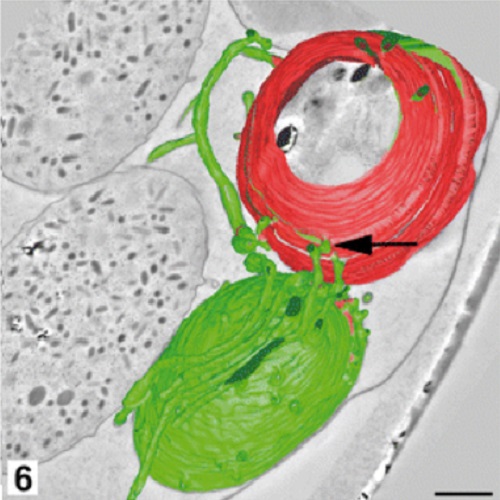Insight into the ultrastructural organisation of sporulated oocysts of Eimeria nieschulzi (Coccidia, Apicomplexa).
Sporulated oocysts of Eimeria contain four sporocysts with two sporozoites each and a sporocyst residuum. The developing sporozoites are protected by the sporocyst wall and the robust double-layered oocyst wall. Because of problems with conventional fixatives, high-pressure freezing, followed by freeze substitution was used to achieve optimal ultrastructural preservation of oocysts, sporocysts and sporozoites. After embedding in Epon®, ultrathin sections were examined by electron microscopy to select specific oocyst regions for further investigation by electron tomography (ET). ET allows high-resolution three-dimensional views of subcellular structures within the oocysts and sporocysts. Analysis of several 300 nm sections by ET revealed a network of small tubular structures with a diameter of 70-120 nm inside the sporocysts which is decribed here for the first time. This network connects the residual body in a sporocyst with the endoplasmic reticulum (ER) of the surrounding sporozoites. The network consists of membrane-bound tubules that contain vesicles but no larger organelles like mitochondria. These tubules, named "sporocord", may have a function similar to an "umbilical cord" providing the sporozoites with metabolites for long-term survival. Small vesicular structures inside the ER of the sporozoites, multivesicular structures inside the residual bodies and vesicles in the tubules support this hypothesis.

- Parasitol. Res. 2012 Nov 07;111(5):2143-7
- 2012
- Cell Biology
- 22955498
- PubMed
Enabled by:
